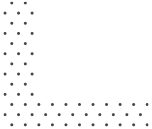How inspired are your students to engage in future sustainability action?
How effective were the components of this kit?
Please provide 2+ examples of student voice on the kit's impact on them
Although parents often make school lunches, students were able to educate them about why they should not use single use packaging which resulted in more waste free lunches at school. Students learnt where their litter can end up and the posters were good to highlight how many different animals can be affected.
Which kit components were the most impactful and why?
The links to the students' pepeha because they learn and build on it each year and suddenly the river became very important. The videos are always engaging, the practical collection of litter and sifting and sorting.
How many bags of rubbish did your class collect?
We didn't do one big collection but it was ongoing for most of the term.
How has this kit impacted your class culture toward whenua ora (land wellness) and sustainability?
The students will now voluntarily pick up litter if they see it in the street. There is a steady increase in waste free lunches. We want to put pressure on the Senior Management team at school to think about minimising waste with all their fundraising initiatives - especially bought lunches.
What is the legacy this kit will leave behind on your learners?
They know that they can make a difference, however small. They need to walk the walk alongside talking the talk.
How high was student engagement throughout this kit?
What was the latitude and longitude of your clean up? (from Sea Cleaners poster)
-43.30827, 172.59603.
What was your cleanup location type?
School
Which of the following types did your class collect?
Plastic Bag, Plastic Bottles, Plastic Cups, Food Wrappers, Household Waste
What was the most interesting piece of rubbish found and why?
We have a lot of young people that use our school grounds during the weekend so always have a lot of extra litter on a Monday morning. The students were fascinated with the range of pods from vapes - especially the different flavours.

